The 21 Spices & Ingredients Essential to Latino Cooking
- April 2022
- By Isabelle Banin
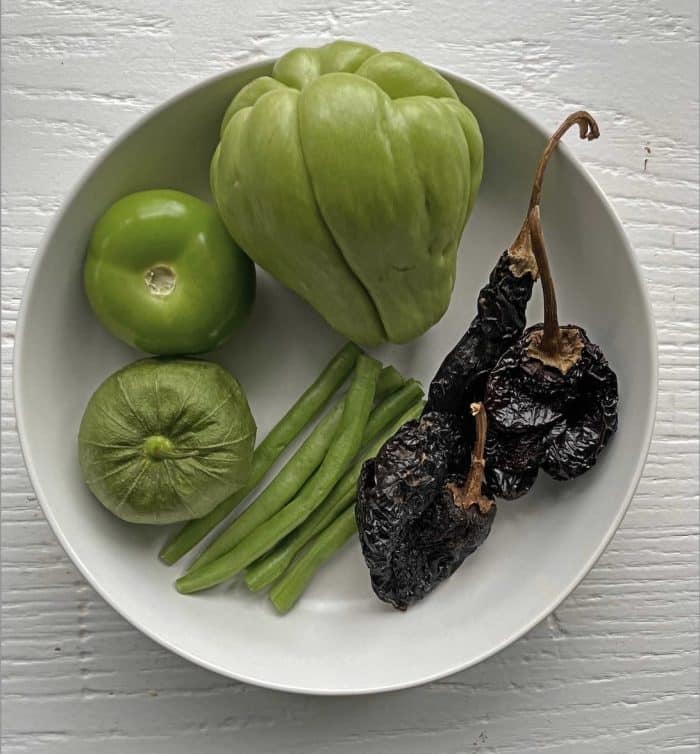
The Familia Kitchen guide to comida latina’s pantry and grocery must-haves for authentic cooking—from achiote to yuca
These 21 Latino spices and ingredients are considered essential by our Familia Kitchen community. When they want to cook and bake their way home the authentic way, here are the fresh spices, produce and pantry basics they make sure to stock in their cocinas—before tackling family-favorite traditional recipes.
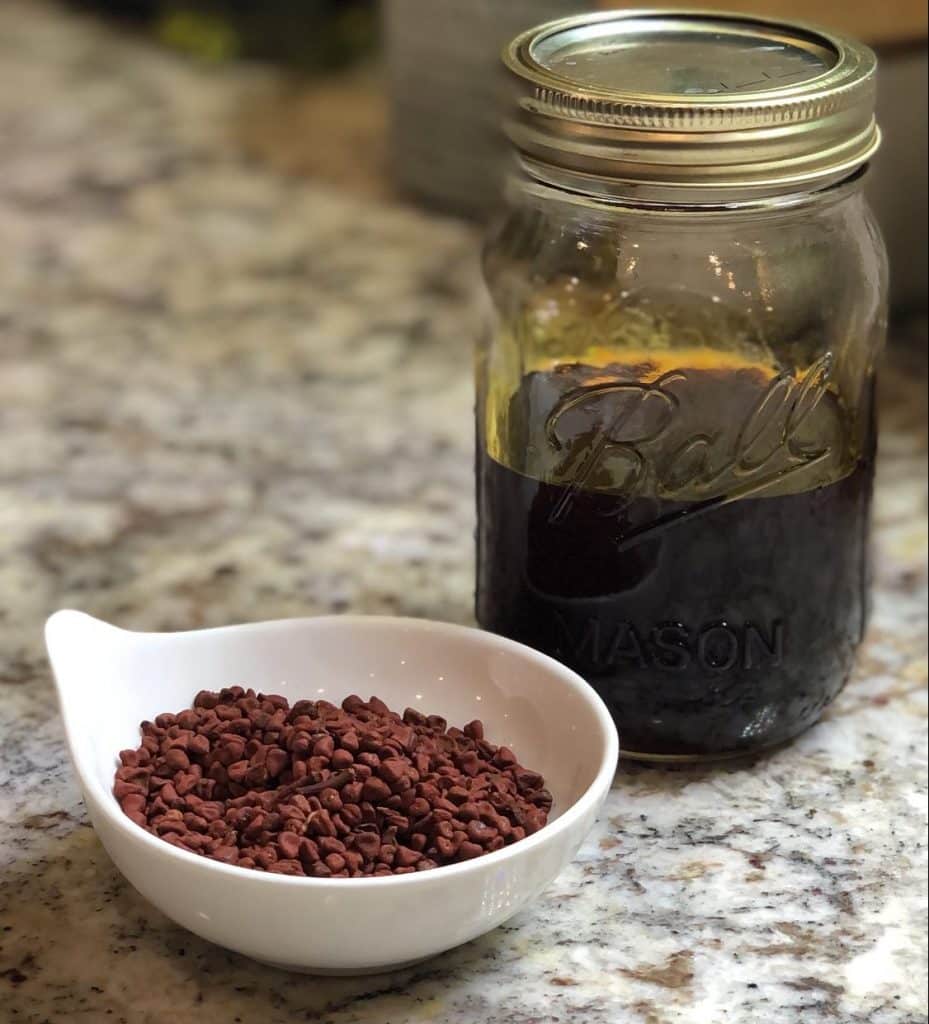
ACHIOTE
Achiote is the orangey-red seed from the annatto tree. Mix it with vegetable or olive oil, and you get achiote oil, prized throughout Latin America—especially in Mexico and the Caribbean. This cooking aceite adds a beautiful amber color and subtle earthy, peppery taste to lots of your favorite Latino dishes. Its flavor is something like turmeric, something like paprika, yet milder. Annatto trees are native to the tropical regions of Latin America, unlike, for example, olive trees, which were sailed to the Americas by the Spanish conquistadors. Achiote seeds’ potential was recognized early by the Mayas and Aztecs, who used it in painting, dying and cooking. Annatto is a Carib-language word, and “achiote” is from the Aztec Nahuatl: axiotl. Achiote oil is used in many traditional recipes, including pasteles (the Puerto Rican and Dominican version of tamales), rice dishes, and stews. Making your own achiote oil from scratch is simple. Remember that the longer the seeds steep in the oil, the deeper the reddish hue. And be careful: achiote stains como loco.
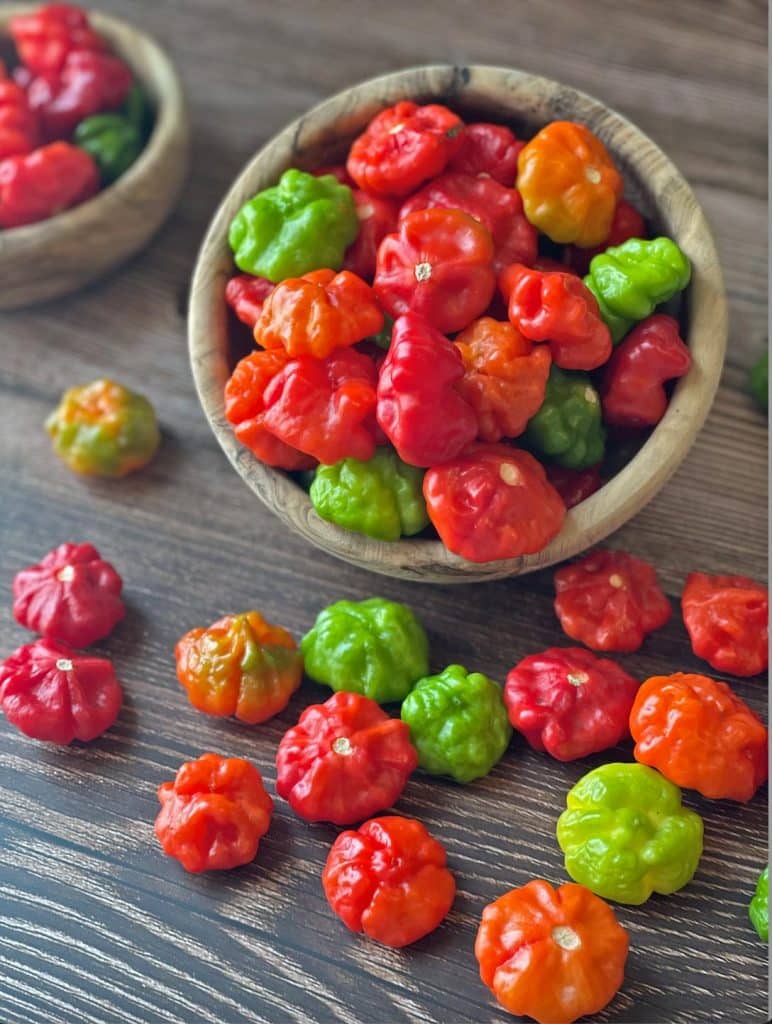
AJI DULCE
Aj dulce is the pepper of choice in Puerto Rican, Venezuelan, Cuban and Dominican food. Indigenous peoples in Latin America have been eating this mild, sweet aji for thousands of years. Ají dulce comes from the Brazilian Amazon, and traveled from there to coastal cities. Spanish colonists had a hand in popularizing this small pepper throughout Latin America. Today, aji dulce is esencial to many traditional dishes, including the all-important cooking base sofrito, so loved in Puerto Rico. These peppers, which look like tiny spinning tops, can be eaten raw or cooked, ripe or unripe, and with seeds or seeded. They can also be cross-pollinated with spicier peppers, like the burn-your-face-off habenero. Before using, taste test your aji dulce to make it doesn’t have any surprise pique or heat. Seeded peppers can last in the freezer for about a year and not lose their signature sabor.

AVOCADO
Fun fact about everyone’s favorite Latino green fruit (a record-setting 3 billion pounds of avocados were sold to the U.S. in 2021). Yes, there are only three main types of avocados–Mexican, Guatemalan and West Indian—but did you know there are more than 1,000 varieties? Before the Spanish conquistadors even thought about showing up, avocado trees were already growing in Mexico, the highlands of Central America, and other Latino regions. For thousands of years, indigenous people on these lands have reached for avocados. Those prescient Aztecs made the first version of guacamole, which they called āhuacamolli. (Their recipe is not that different to the guac we make today.) Today, avocado, mashed or sliced, is a favorite add-on to rice and beans, tacos, tostadas, arepas y muchos dishes más. Luckily, despite their rich and buttery flavor, avocados are good for us. They are nutritious, anti-inflammatory, a healthy source of fiber, and low in carbs and sugar levels. Buying tip: Bring home avocados at varying stages of ripeness, so that those eat-me-right-now days don’t overlap. A perfectly ripe avocado will feel firm but yield to gentle touch. Store in the refrigerator to help avocados last longer.
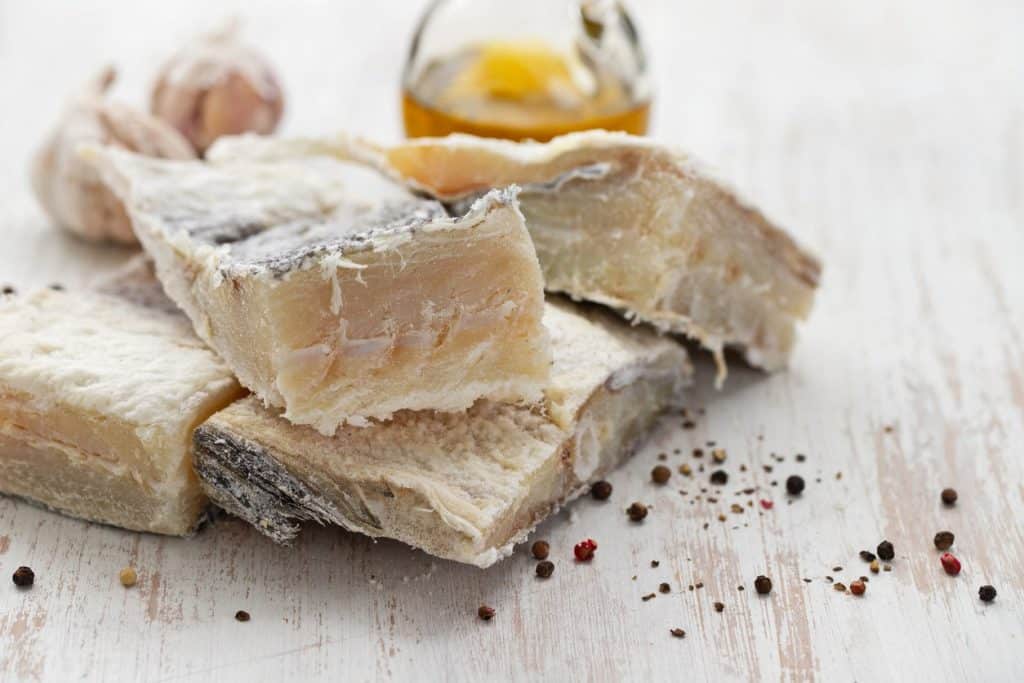
BACALAO
Bacalao is codfish that’s been salted and dried. This method of preparation is attributed to the Basques, thought to have started dehydrating fish during the 14th century. To cook with it, soak the dried pescado in water—this rehydrates it and removes the extra salt. In the days of pre-refrigeration, drying and/or salting fish was an innovative way to preserve food for months. The Vikings are thought to be the first to dry cod fish, in preparation for long sea voyages. Today we can keep fresh fish in our fridges and freezers, but many people throughout the world love the distinct tangy flavor of bacalao and continue to use it in recipes. In Latin America, dishes bacalao a la vizcaína, a stew especially popular during the holidays and Lent. Other favorites include Puerto Rican bacalaitos and bacalao con papa. To keep the saltiness of these delicious dishes in check, soak bacalao in your refrigerator overnight before cooking it, changing the water at least two to three times.
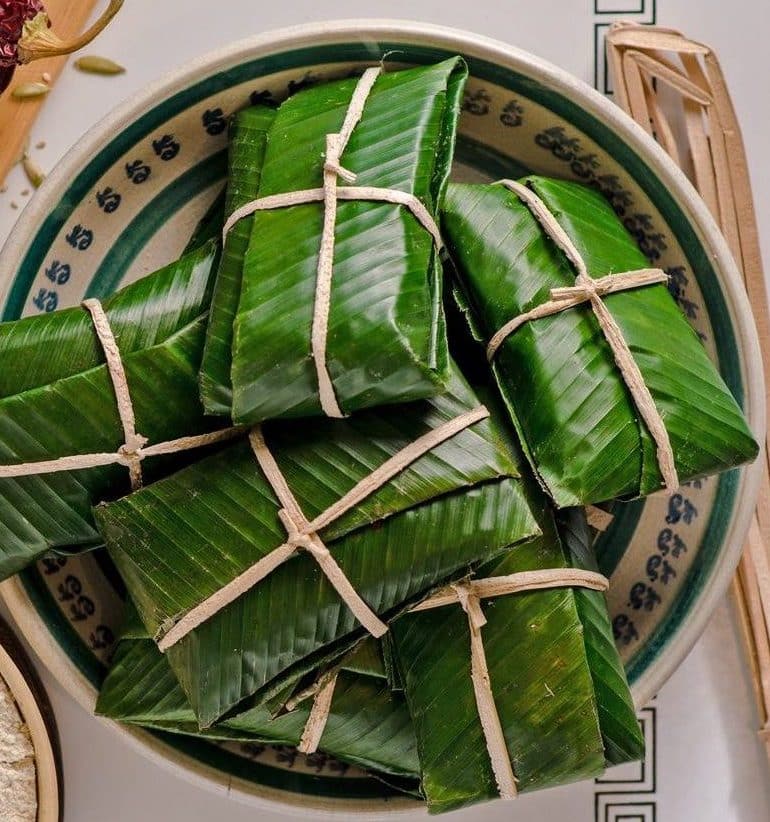
BANANA LEAF
The leaves of the banana plant are inedible, but are an essential ingredient in many Latino dishes. These hojas are used to wrap a variety of masa-stuffed traditional dishes, including: tamales, nacatamales, hallacas, pasteles y más. They are filled and boiled or steamed. And when the wrapped rellenos are ready, they can be used as plates. Slice them open and enjoy the steaming-hot deliciousness! Before cooking with banana leaves, clean them thoroughly and with care, since they are delicate. You can usually find them packaged and frozen in Latino and Asian grocery stores. The banana is a staple in tropical regions (and non-tropical! Are they an always-stocked food in your kitchen?). Did you know there are more than 1,000 types of bananas in the world, including the starchy plantain prized in so many Latino dishes. This fruit is most likely native to Asia and brought to the Americas by the Spanish in the 1500s. That said, some food historians say the plantain was already growing in Latin America as early as 200 B.C.
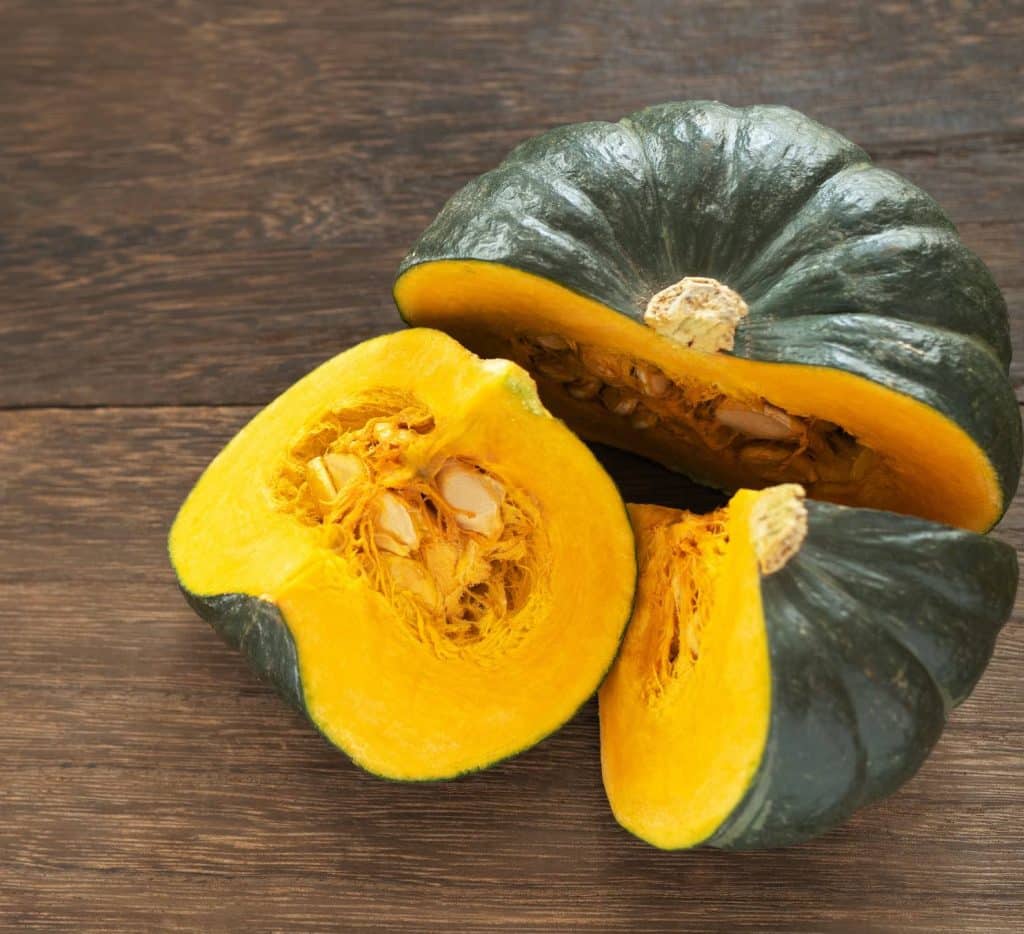
CALABAZA
Calabaza is the catch-call term for winter squashes and pumpkins, many of which are native to the Caribbean and Latin America. Indigenous groups have been eating this fruit (yep: because it has seeds) for thousands of years—no wonder calabaza is in so many Latino recipes. A few traditional dishes with calabaza popular in the Caribbean today include rice and beans and Dominican sancocho. In Puerto Rico, the Dominican Republic, and Cuba, calabaza is also often used to thicken sauces. Bonus: Calabazas are delicioso and healthy: low in carbs and packed with vitamin A and C. The exterior of this mild and sweet pumpkin is thick, which helps it last for months when stored in a cool, dry place. The calabaza’s tough skin is much easier to remove after it has been cooked and cooled. How do you know when a stewed, boiled or roasted calabaza is ready? Its exterior turns soft.
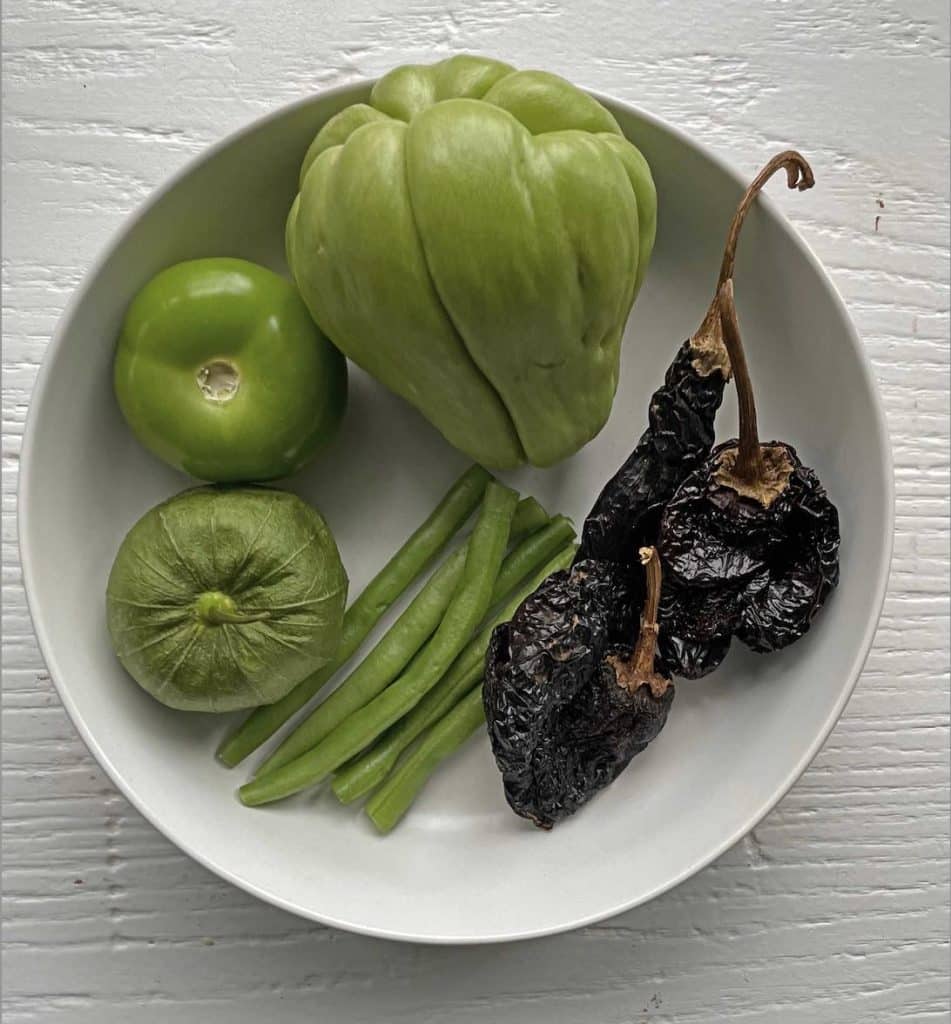
CHAYOTE
Chayote is a type of soft-skin summer squash native to Central America. This subtly sweet and tender fruit was cultivated by the Aztecs and Mayans and is still popular throughout Latin America and beyond. Since the chayote has a relatively mild taste, it pairs well with strong flavors like chiles and onions. In its raw form, chayote is delicioso in salsas and salads. Its seeds are roasted and ground to make pepitoria for pepián, Guatemala’s country’s national dish. Chayote can also be prepared any number of ways, including baked, fried, steamed, boiled and stewed. You can eat all of it: the chayote plant’s roots, leaves, and shoots are all edible and commonly used in Latin American cooking. While the chayote skin can be eaten, it is less tender than the interior and often peeled away. When removing the skin, a sticky sap may be secreted. To avoid the sap sticking to your skin, handle chayote with gloves or soak your hands for a few minutes after cutting and peeling chayote. When buying chayotes, look for the ones with unblemished, firm skin. Store it in a plastic bag in your fridge, for up to 4 weeks.

CHILES
Here’s another gift to from Latin American to the food world: el chile! Chiles of all types, flavors and sizes were shipped by the Spanish and Portuguese back across the Atlantic, starting in the 1500s. Today, there are more than 4,000 types of chiles, all belonging to 5 capsicum species with fancy Latin names. They are most often used in four ways: fresh, dried, crushed or pulped. Smaller chiles and dried chiles tend to be spicier than big and fresh (think of the the tiny and fiery-red chile arbol vs. the big, mild and green poblano). Most Latino countries will favor one or two types of chile. On the other hand, multiple types of chiles can be used in a single dish to add complexity and sabor. Chiles are used in just about every type of Latino dish type, including salsas, stews, pozole, mole, tamales, y mucho más. Here are a few of our favorites:
Serranos are bright-verde and thin, about the length of your forefinger. They add brightness and heat to salsas, pozoles, tacos, y más. Compared to other chiles on the Scoville scale, which measures chile heat, serranos are in the medium range.
Guajillos are the dried form of the red mirasol chile. The result is a smoky, slightly sweet, and mild spicy flavor. As with all chiles, the membranes and seeds are the spicy parts and can be removed for a milder taste. On the Scoville scale, guajillos rank as mild.
Poblanos are one of the meekest chiles on the Scoville scale, especially when they are in their green, less ripe stage.
Anchos are dried poblanos. They are smoky, earthy in flavor and sweet. Similar to guajillos, they are mild on the Scoville heat scale.
Jalapeños are deep green and about the same length, though chunkier than serranos. They’re one of the most popular chiles sold in U.S. grocery stores. Similar to poblanos, they are on the milder side of the Scoville heat scale. Jalapeños are more spicy than poblanos and less than serranos.
Chipotles are ripened and dried jalapeños. While their Scoville rating tends to be on the low side of medium, their smoky flavoring compliments lots of dishes—making them a popular chile choice.
Chiles de arbol are small, red and hot. They can be used dried or fresh (keeping the same name for both—unusually), although the drying process deepens their flavor. As to their Scoville scale number, this chile scores in the—you guessed it—super-caliente range.
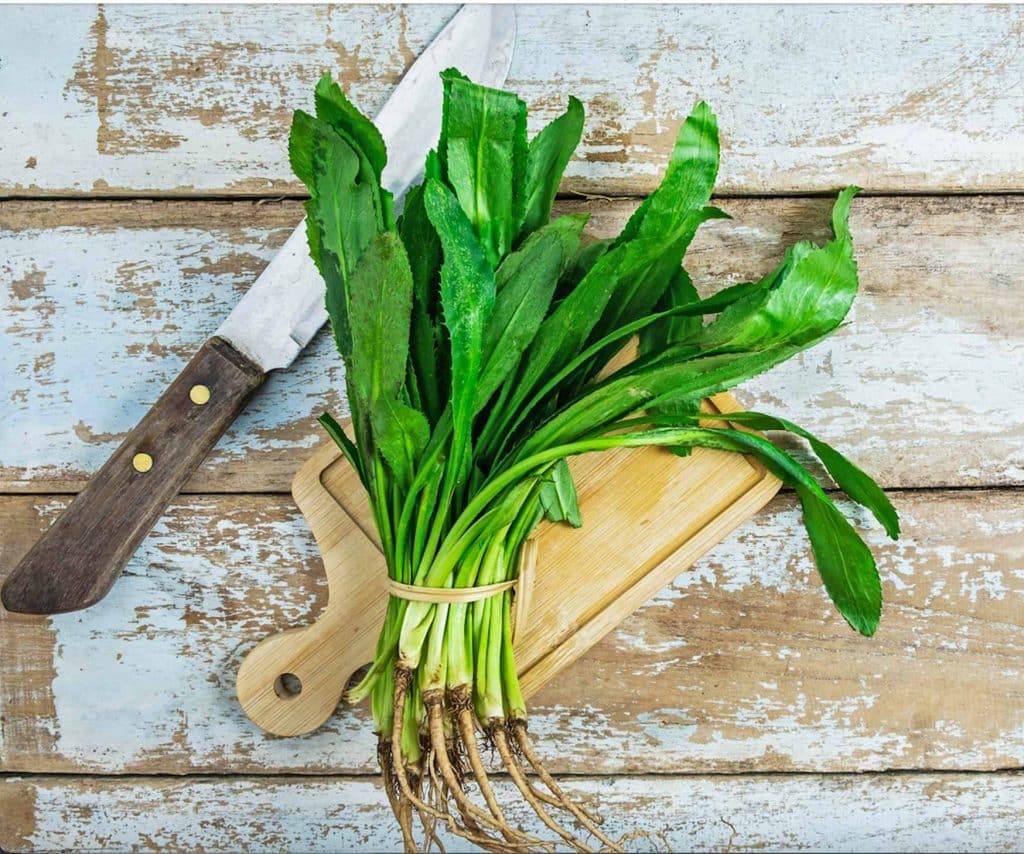
CULANTRO
This citrusy herb regularly referred to as pungeant is native to Latin America. Its long, spiny, serrated leaves are used in slow-cooked sauces, soups, rice, and meat dishes. In Puerto Rico, culantro is a traditional ingredient of sofrito, the essential cooking base for so many authentic dishes. This herb tastes slightly similar to cilantro, which is the substitute of choice if you can’t find it in your grocery store. That said, culantro’s flavor is stronger and comes from a completely different plant. Culantro freezes well, thanks to the strength and heartiness of its leaves, making it an abuela-cooking favorite ingredient.

DULCE DE LECHE
Dulce de leche is a lush, sweet sauce used to drizzle over or bake into Latino desserts, especially in Mexico and Argentina. Dulce is the start of so many postre recipes sent to Familia Kitchen, including crowd-pleasers chocoflan and flan mixto. Dulce de leche is also often confused with caramel. For so many good reasons: They look alike. They are both soft and swirly. They taste similarly toasted-sugary. But they are different. Dulce de leche is silkier, softer brown, made with sugar and (like its name says) milk. Dulce de leche is made with cow’s milk. When goat milk is used, it’s called cajeta. Caramel is usually denser and darker brown, and made with just sugar and water (no milk!). Dulce de leche usually is usually spooned on desserts or bread, while caramel is usually made to use in the baking of another traditional dessert. You can buy premade dulce de leche from your local grocery store. Most are (honestly) not bad! Lots of abuela cocineras and excellent Latina cooks we know used bottled dulce de leche in their baking. If this is you: feel no guilt—we admire you for using your cocina time wisely, and buen provecho. That said, it truly is worth the effort to make it from scratch: Your dulce de leche will be that much more creamy, lush and ooh-and-aah’d over. Plus: it keeps for three weeks in your fridge. To go deeper on dulce, check out our report on three ways to make dulce de leche, here.
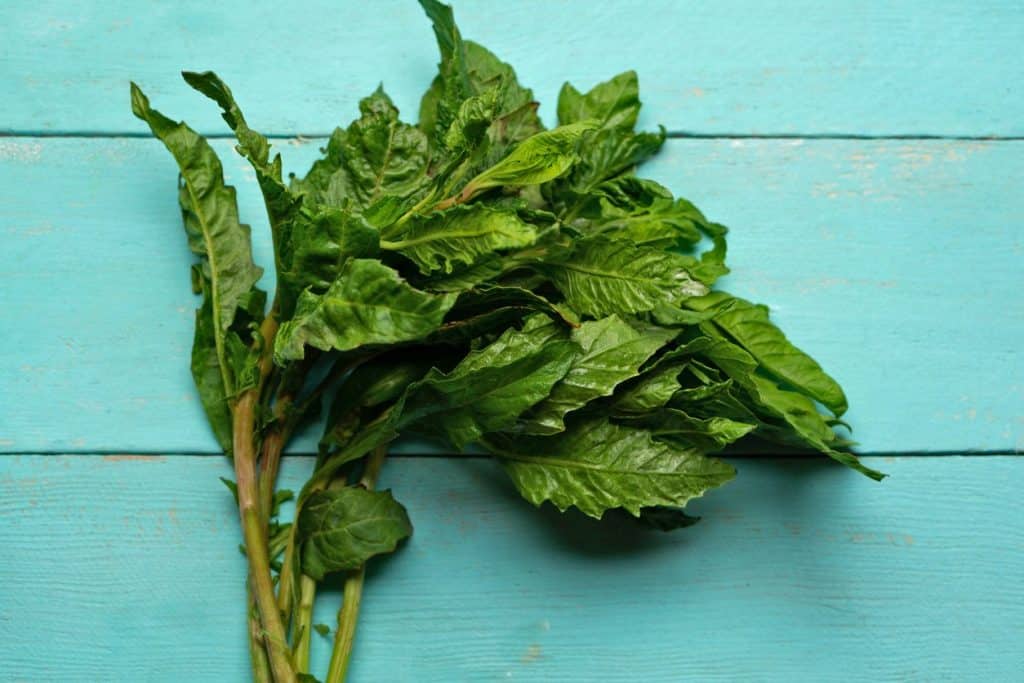
EPAZOTE
Epazote is the star of many Mexican traditional dishes such as tamales, mole, and salsa. Also known as wormwood, this herb tastes like a mix of oregano, fennel and tarragon. Epazote is thought to have anti-gas properties, making it extra popular in bean-based dishes. This green, aromatic herb native to Latin America has been used for both medicinal purposes and to flavor dishes for hundreds of years. The Mayas used it to cure intestinal parasites. Its name comes from the Aztec word epazotl—a combination of their words for “skunk” and “sweat.” (We know: appetizing! And yet: epazote adds an unmistakably authentic, delicioso Mexican sabor to many of our fave recipes and has been used for centuries.) Despite its funky smell, epazote adds a bright, citrusy flavor. Unlike culantro, epazote is delicate, which is why both the dry and fresh versions of this herb are added toward the end of the cooking process. Epazote should also be used in small amounts, since it can be poisonous when consumed in large quantities. As in really large: 1,000 mg can be lethal and a typical serving is 1 sprig—or 2g.

HOMINY
You know those big corn kernels bobbing in your bowl of pozole? That’s hominy. Hominy is a form of corn called field corn or maize. We get hominy thanks to an ancient process called nixtamalization. The word comes from a mashup of two Aztec Nahuatl terms: nixtli (ashes) and tamalli (cooked maíz masa—and, yep, the origin of the word tamales). So: fire-cooked corn. Or to get all sciency: Nixtamalization is the process in which corn is soaked and cooked in an alkali solution made of food-grade calcium hydroxide or pickling lye. This is how inedible field corn transforms into puffy kernels double their original size. Hominy can be eaten whole or ground into masa harina. Not only does this process help preserve the corn kernels (literally life-sustaining for the Mayas and Aztecs), it also lets the human body absorb niacin, an essential nutrient in corn. The earliest known use of nixtamalization is in southern Mexico and Guatemala, starting around 1,500 B.C. Because nixtamalization also changes the structure of corn’s proteins and carbs, it allows the production of a stable, ground grain that can stick together when water is added. Thanks to this ingenious process, humanity was able to make masa harina. And the rest is comida history. Without it, we would not have tortillas, tamales, arepas, pupusas and so many other foods crucial to the survival of our ancestors.
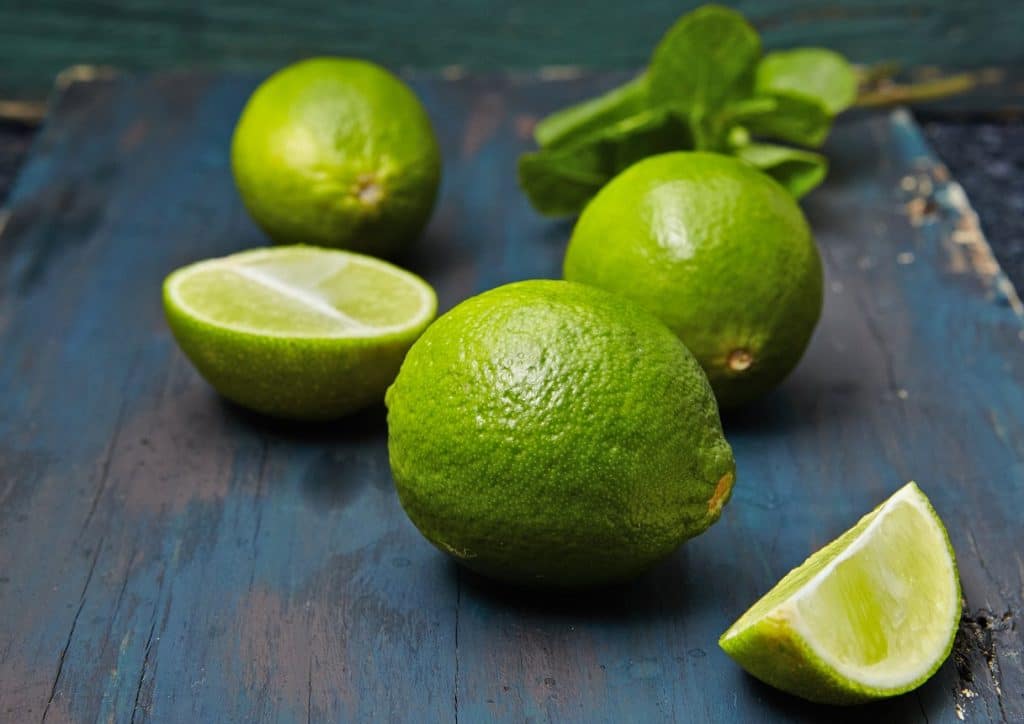
LIME
The lime‚ juiced or zested—is used in just about every kind of Latio dish. From desserts and dressings to beverages, ceviches, and marinades for hearty meat dishes, limes add a refreshing tart, slightly-sweet zing and even “cooks” ceviches. Limes are nutritious and have lots of health benefits. Starting with: limes are rich in vitamin C, can reduce inflammation, and may also help with digestion. Lime juice further enhances Latino recipes by tenderizing meat when used as a marinade, and can slow the oxidation process of some foods. This popular fruits is native to Asia and was brought to the Caribbean and Latin America by the Spanish in the 1500s. When shopping for limes, choose ones that are bright green with firm, thick skins. Here at Familia Kitchen, we find it fascinating that the word limón means the yellow lemons in Puerto Rico and other places and bright green limes in Mexico and other places. Whatever you call them, limes are always stocked in our cocina.

MASA HARINA
Masa harina is used in tortillas, tamales and so many of your favorite Mexican and Latino foods. It is dried-corn dough from ground nixtamalized corn flour made from maize, also known as field corn. Corn was first domesticated thousands of years ago from teosinte, a type of wild grass, in the area we today call Mexico. Corn went on to become essential to the country’s culture and economy (as the Mexican saying goes: “sin maíz, no hay país”—or “no corn, no country”) and grew throughout Latin America as a staple crop. Field corn has a high starch content, making it sticky and ideal for masa dough. The traditional way to make masa harina is with a molcajete and metate, cooking tools made from volcanic stone that have been used for thousands of years. When making masa harina, be sure to use warm water. Its heat improves the flavor of the masa and helps the cornflour bind. Want to go deeper? Check out our Familia Kitchen ultimate guide to corn flour here and our brief history of corn in Mexico here.
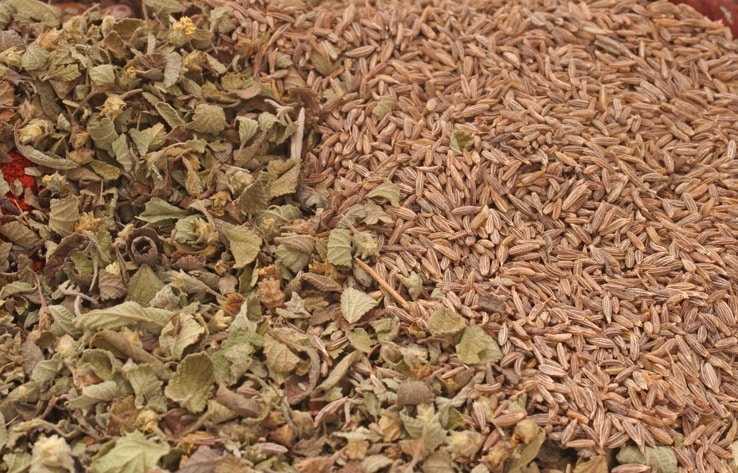
MEXICAN OREGANO
Mexican oregano is native to Mexico, Central America, and parts of the United States. This herb adds a light, citrusy, slightly musky (in a good way!) taste to dishes. The herb is popular in Mexico, Cuba, and many parts of Latin America. Confusingly, Mexican oregano is a completely different plant from European or Mediterranean oregano, which tends to have a more subtle and minty flavor. Inside of Mexican oregano are essential oils. Release them by slightly grinding the herb with a mortar and pestle or by rubbing it lightly between your fingertips before adding it to your recipe. This aromatic herb is delicioso fresh or dry, and can be bought in different grinds. You can find it in most Latino grocery stores. Look on the label to make sure you are buying the right kind. No matter the savory dish you are cooking, from carne asada to Tex-Mex chili to pozole, Mexican oregano adds a strong, welcome authentic hit of sabor that makes every dish—in our opinion—tastier.
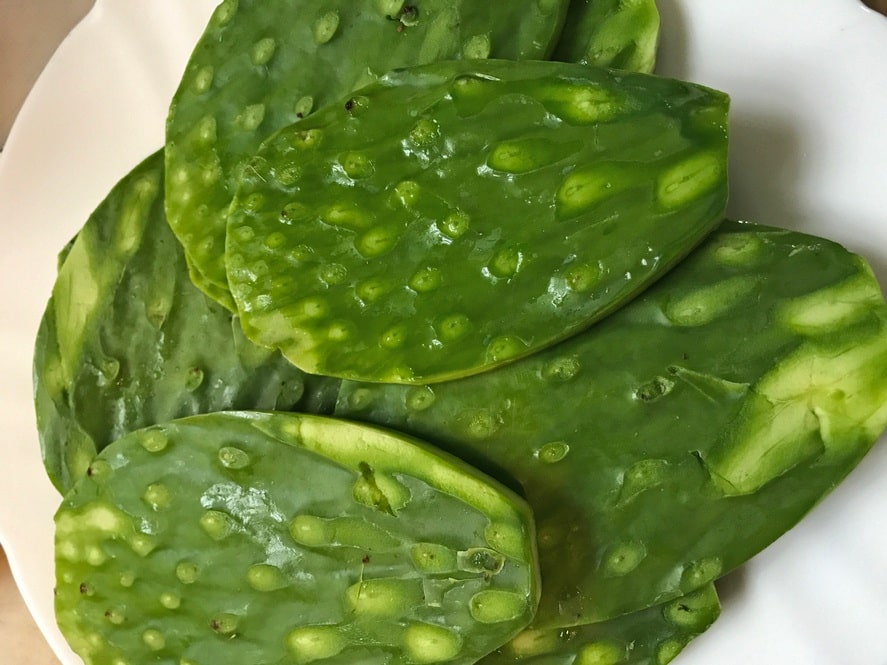
NOPAL
The incredible, edible nopal or nopalito comes from the prickly pear cactus, native to Central America. One of our favorite Mexican-food homecooks and food story spinners Anjie Villalobos tells of her former sister-in-law China wandering down their Los Angeles road to snip a paddle off a neighbor’s cactus. She would come home to scrape and cook it—with delicioso results, of course. Nopales were used by the Aztecs and other indigenous groups for medicinal, dyeing, and culinary purposes. This tart, citrus fruit and vegetable (yes: it’s both, amazing, right?) is popular in Latin America, especially in Mexico. A few popular dishes with nopales include: ensalada de nopales, nopales tacos, and many meat and egg dishes. When choosing nopales, look for firm, bright green and smaller paddles (although larger nopales can be delicioso, too). Nopales are juiciest when they freshly sprout, in the spring and fall. They can be eaten raw, boiled, pickled, or cooked—on their own or cooked into dishes. When preparing nopales, first remove the spines with a knife. While the ends should be cut off, the skin can be left on. The nopalito tastes and has a consistency similar to okra—aka slimy. But good!
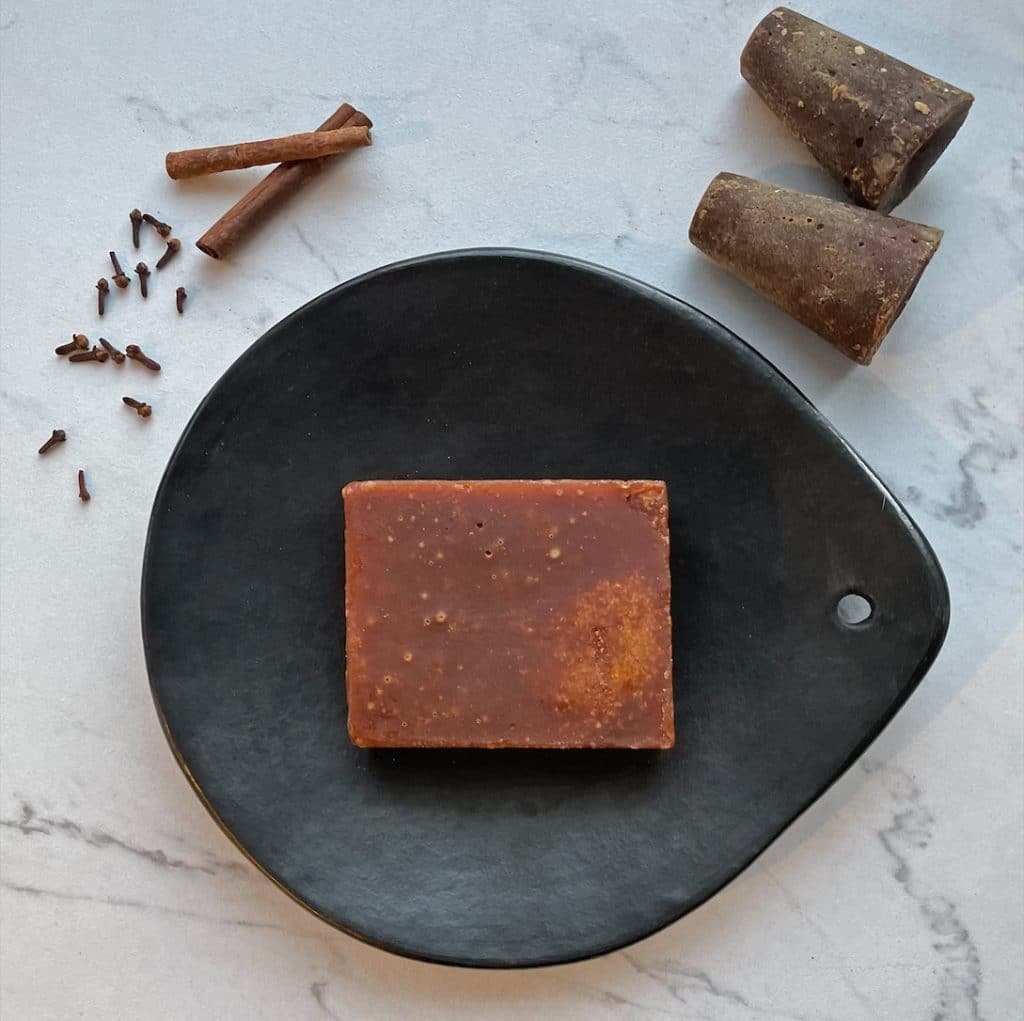
PILONCILLO
Piloncillo is unrefined sugar, made by pouring boiled and evaporated sugar cane juice into a square- or cone-shaped mold. The resulting brown-colored sucrose has a flavor that is deeper and smokier than brown sugar—something like a caramely molasses. Its name means little loaf, a nod to its shape, and is produced in two strengths: dark brown and light brown, just like brown sugar. Piloncillo is also hard as a rock, which means homecooks sometimes have to get out the hammer to chop it into pieces for baking and cooking. Piloncillo can also be grated or melted to add its earthy sweetness to traditional Latino dishes and drinks. Panela is another name for this unrefined cane sugar product, and comes in chunky squares and rounds, not cones. Piloncillo has been made in Mexico since Spanish conquistadors first brought sugar to Latin America. Mexican desserts that include this sabroso sweetener include Mexican capirotada bread pudding and Guatemalan fruit ponche.
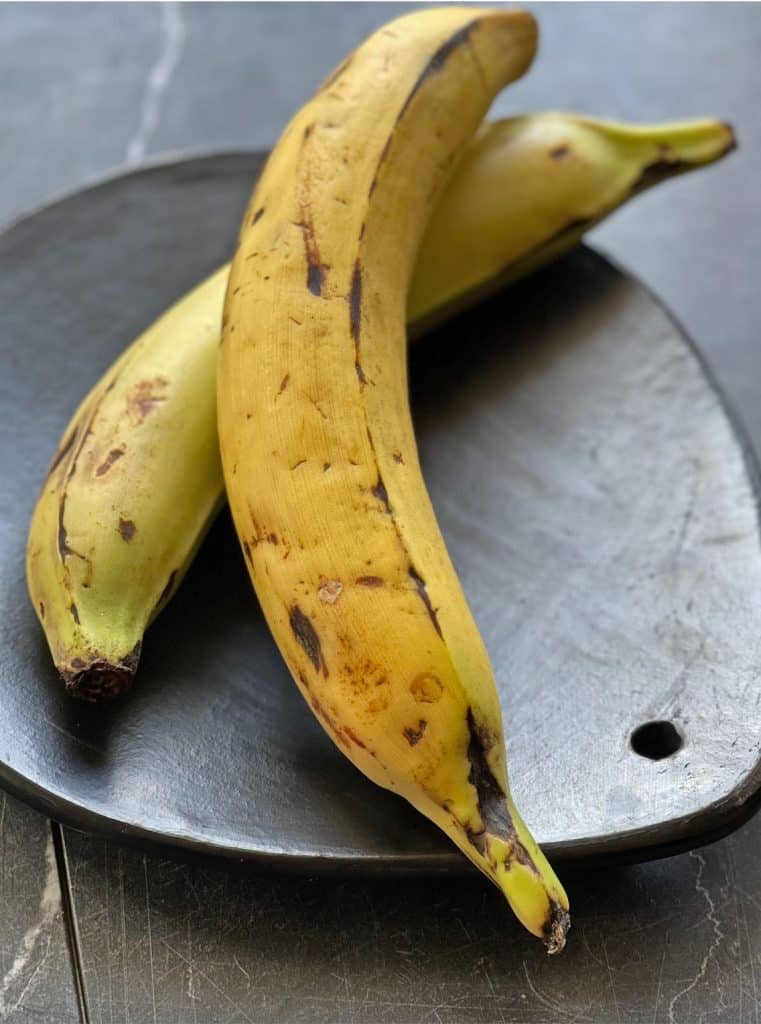
PLANTAIN
The plátano comes from the banana family and plays the leading role in many comida latina star dishes. Plantains are the tabula rasa of Latino foods: they can be boiled, fried, baked, roasted. They can be sliced, mashed, pureed, stuffed. Eat them as the main, side, snack, and even dessert. Our favorite plantain-icioso mains include pastelón: the Latino take on lasagna made with plantain slices instead of pasta, Dominican sancocho, and mofongo. The fruit, native to southeast Asia and Africa, has a sad Latino origin story. It is a product Spanish colonization, hand-carried to Central and South America and the Caribbean by enslaved Africans. Today, plantains are so loved in Puerto Rico, they are a symbol of the island and Boricuas speak of having “la mancha del plátano”—the stain of the plantain—forever marked on their soul and skin. Color matters with cooking with plantains. Very ripe yellow, brown or even half black plantains are sweet. Bright or yellow green plantains are what you want for savory dishes, like tostones. To peel a plantain, slice off the tips at both ends and make one or two lengthwise slices in the tough skin. When frying or roasting, cutting them into thick chunks is key, since too-skinny slices can quickly burn and dry out. Generally, 1- to 2-inch chunks are the ideal to get plantain fritters’ legendary texture-flavor combo: caramelized-buttery gold on the outside and tender-sweet delicioso-ness on the inside.
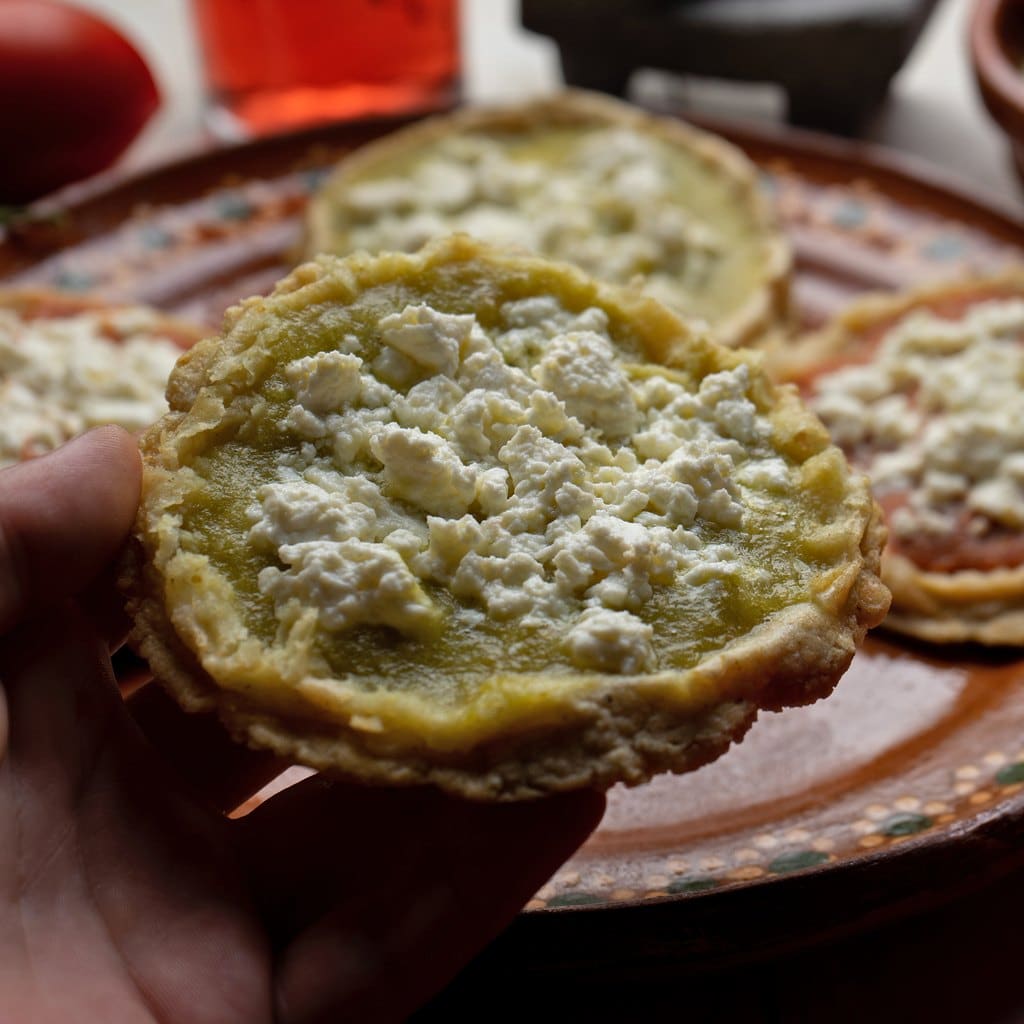
QUESO FRESCO
Queso fresco is a white, tangy, crumbly cow cheese popular in Mexican cuisine. It’s something like feta, but milder and more firm. The Spanish introduced cattle raising and cheese making to Latin America in the 16th and 17th centuries, and one result is queso becoming a key ingredient in many Latin American dishes. Because queso fresco resists melting, it adds texture and a subtle tanginess to many dishes—especially Mexican classics like chile rellenos and quesadillas— without changing their structure. This queso can be pan-fried, baked or enjoyed fresh. If you are worried the chile-spiced dish you’re making tastes too caliente, adding a sprinkle or two of queso fresco can offset the pique, while complementing the sabor.
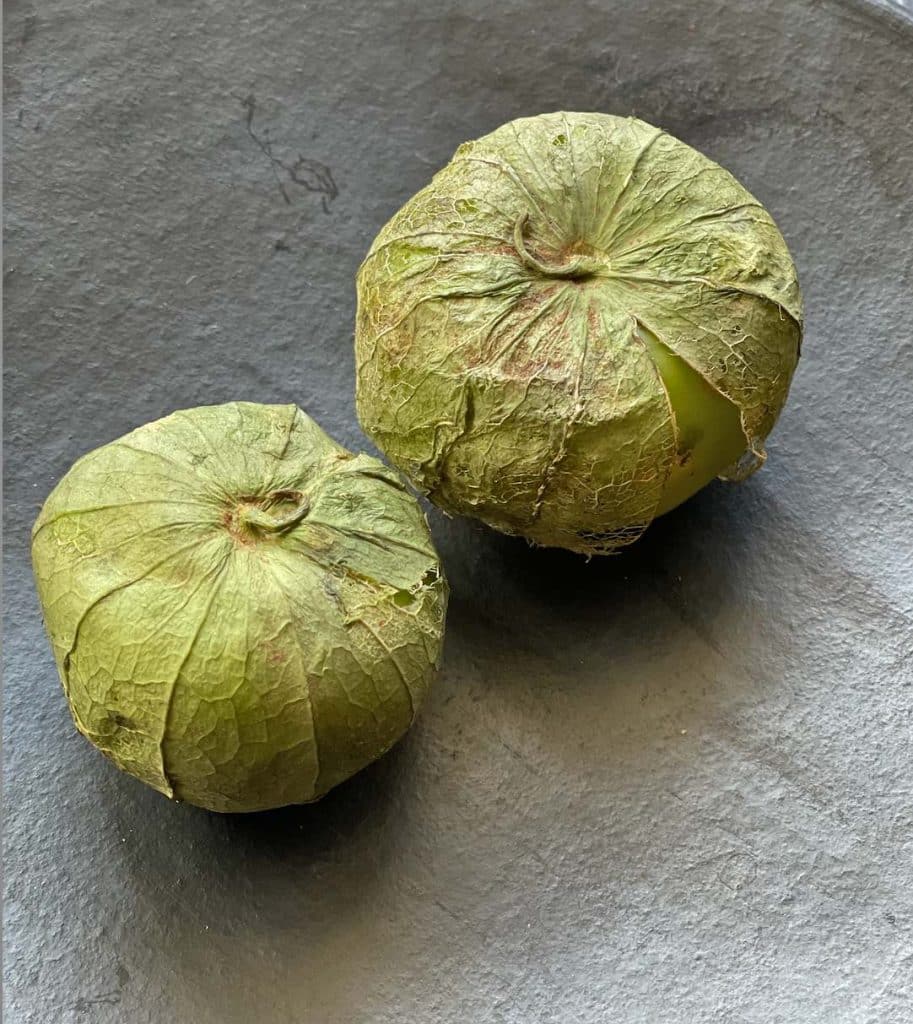
TOMATILLO
Inside the papery covering of each green tomatillo is a small, tart fruit that can be eaten as is or cooked. When eaten raw, this nutritious fruit adds a bright, fresh zap of acidic flavor to your comida. Its name means little tomato, but it comes from a different strains of the same fruit family, nightshade (along with the eggplant and peppers), as its red cousin. Both tomatillos and tomatoes are native to Mexico and Central America. Their shared name comes from the Aztec Nahuatl tomatl, meaning something like “fat fruit.” (We love that.) The Aztecs were the ones to first domesticated tomatillos for eating and cooking. Today, tomatillos remain popular in Mexican and Guatemalan cooking, and are regularly used in salsa verde, pozole, and pepián. You call tell when a tomatillo is ripe and ready to eat when its husk becomes dry and starts to split. Since tomatillos can be sticky after harvesting, be sure to carefully scrub the fruit clean. This helps get rid of the slimy factor. Want to learn more? Check out our deeper drive into one of our favorite frutas in this piece: ”All About the Tomatillo.“
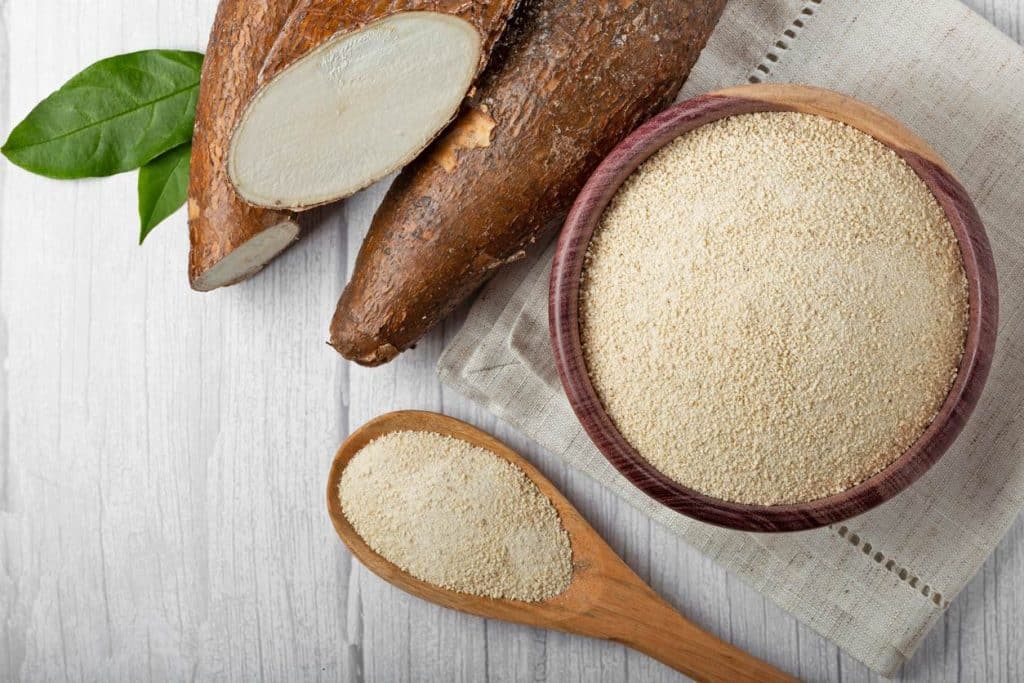
YUCA
Yuca or cassava is a starchy root vegetable native to Latin America. The first people to cultivate this energy-dense food were most likely the Mayas, though other Latin American indigenous groups, like the Caribbean-based Taínos, have been growing yuca for more than 1,000 years. Yuca is easy to harvest, hardy, delicious, and nutritious, making it a go-to crop for ancient and modern Latinos. The Mayas also used yuca in a variety of delicioso ways, including grinding it into a powder known as almidón, or cassava starch. The resulting “yuca flour” was used to make tamales, tortillas, and other starchy foods. Today, popular dishes starring this root vegetable include Dominican arepitas de yuca, Dominican boiled yuca with red onion mojo, Cuban fried yuca with mojo, and Panamanian fried carimañolas and enyucado cake made with yuca and coconut. Boiled, sautéd, fried, or steamed yuca can also be added to a variety of dishes or eaten solo as the side. (Just don’t confuse yuca with the similarly named flowering shrub called yucca, which is pretty to look at. Eat, not so much.)
Stocked up on Latino spices and ingredients? Put them to delicioso use in hundreds of authentic, family recipes at Familia Kitchen!
MoreLike This




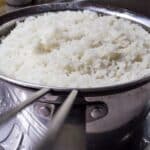
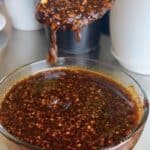

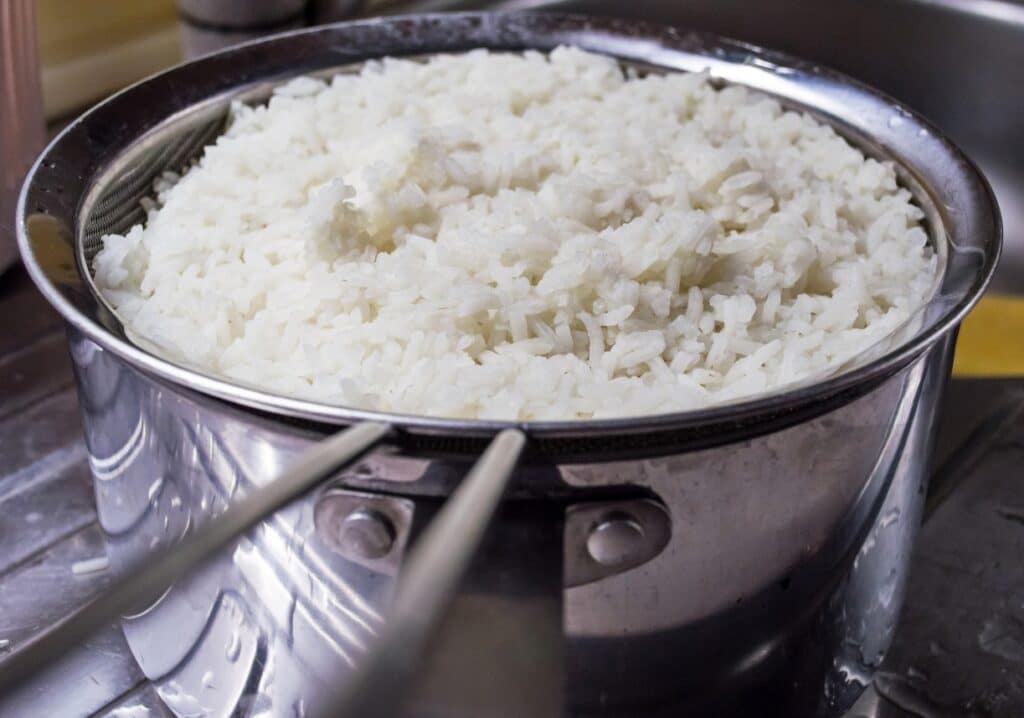

Got a question or suggestion?
Please rate this recipe and leave any tips, substitutions, or Qs you have!